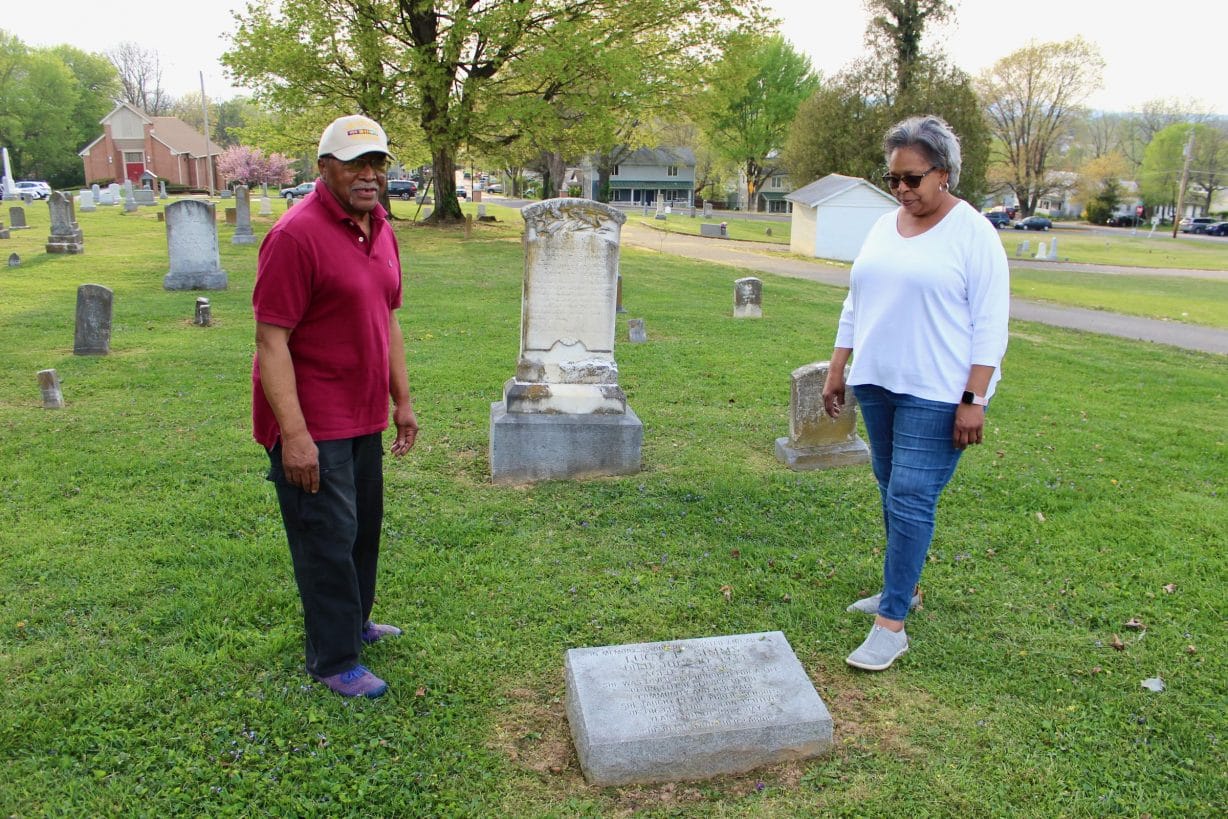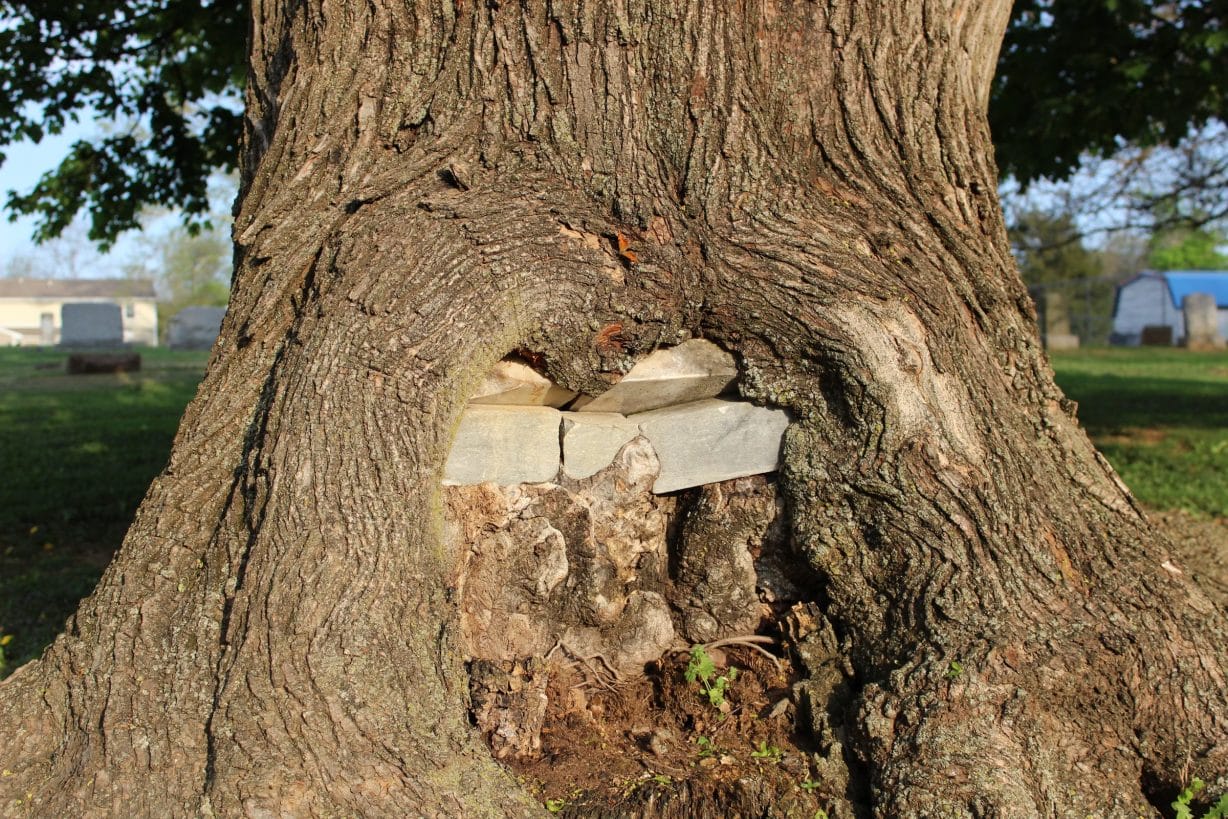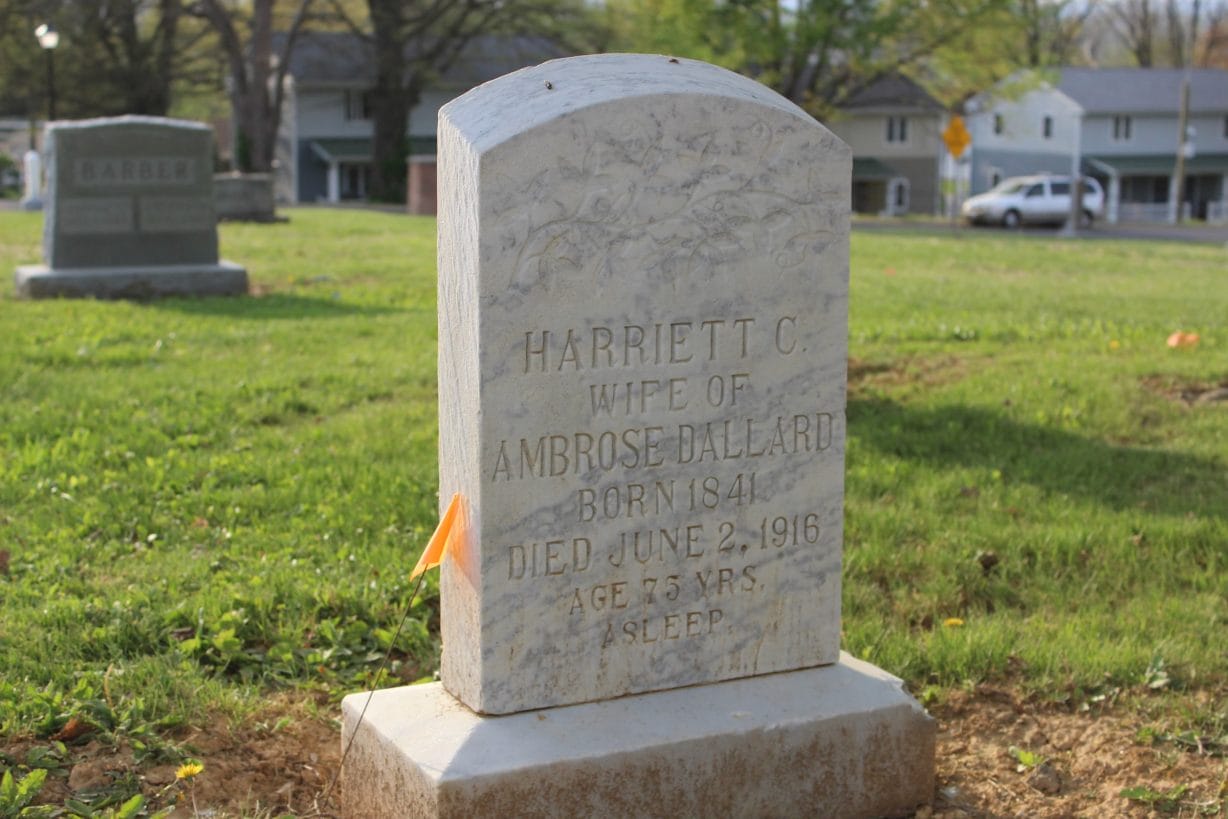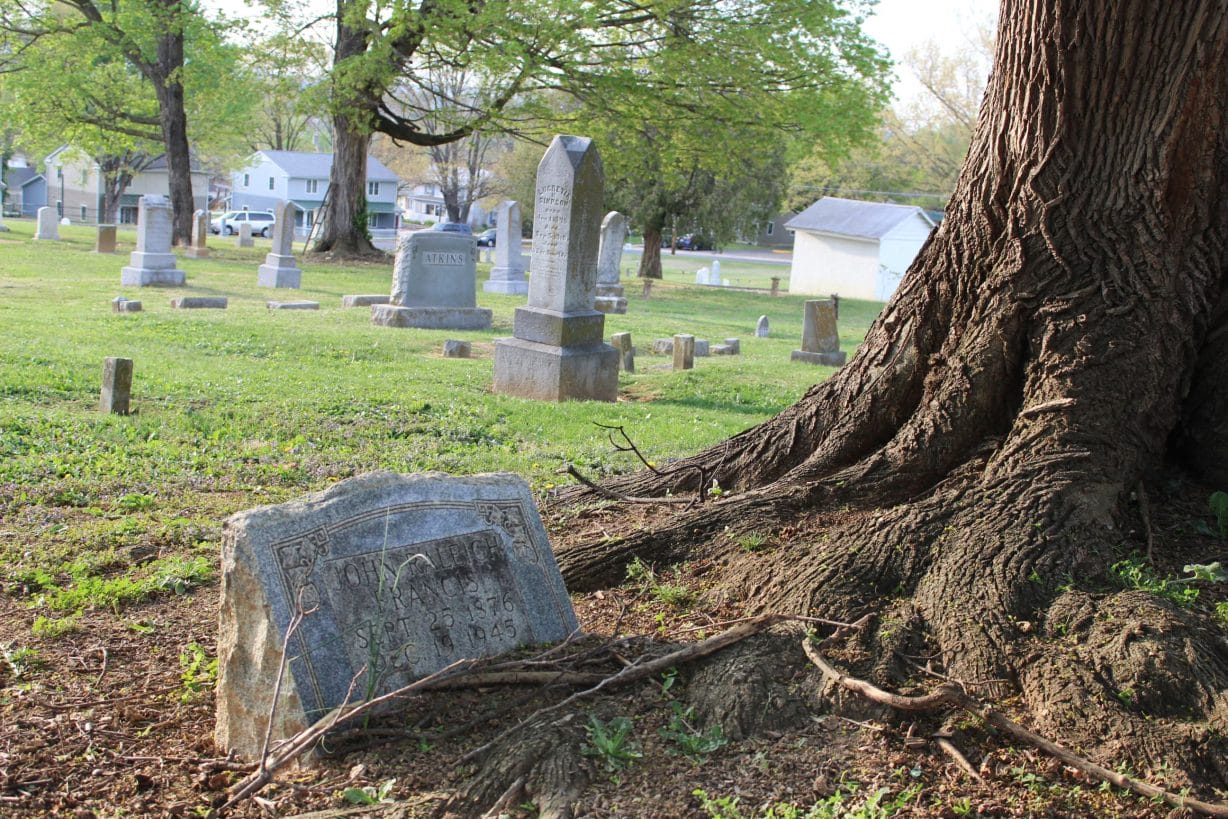
By Bridget Manley, publisher
The Newtown Cemetery, one of ares’s most historic cemeteries, is getting rejuvenated — little by little — thanks to a grant through the state of Virginia.
The cemetery, which is the final resting place for many of Harrisonburg’s African American residents, was purchased after the Civil War by formerly enslaved Black people who wanted to create a burial place for their loved ones. It’s one of the few Black cemeteries on the National Register and is listed on the Virginia Landmarks Register.
A reverent and serene four-acre space on the north end of the city, the cemetery is a key part of the fabric of the Northeast Neighborhood. Throughout the decades, the 150-year-old cemetery has survived and thrived, but the oldest markers show the passage of time.
More than 900 people are buried in the cemetery, including legendary educator Lucy Simms as well as many emancipated slaves.
Karen Thomas, founder and president of the Northeast Neighborhood Association (NENA) and a trustee of the Newtown Cemetery, said the goal is to restore the markers to their former glory.

How the grant works
Thomas told The Citizen that the grant provides funding for rejuvenation of markers for people born between January 1, 1800, and January 1, 1900, who are buried in the cemetery.
The grant is through the African American Cemetery and Graves Fund, administered by the Virginia Department of Historic Resources, and 412 burials in the cemetery qualifiy for the grant.
The grant money sounds small — $5 for each grave — but it ends up allotting the Northeast Neighborhood Association $2,060 a year. And that money is distributed on an annual basis.
The money NENA received for 2021 has already been put to use. Working with W.A. Hartman Memorials, the 20 markers most weathered and in disrepair got cleaned and restored, and the hope is that all the markers will be restored, along with replacement of some markers and vegetation management.
When the grant was first approved by the General Assembly, the Newtown Cemetery was not on the list of burial grounds to receive funds. Thomas reached out to state Del. Tony Wilt, the Broadway Republican who represents the area, and he pushed to amend to law to include the Newtown Cemetery.
Thomas said that some graves in the cemetery currently do not have stones, and some are in deep disrepair.
Many times, families would not have enough money for markers, and in other instances the markers would fall over and get buried by the soil as time went on.
Trustees hope in the future to use JMU’s ground penetrating radar technology to find those stones that may be under the soil and unearth them.

The founding of the cemetery
Carole Nash, director of the Environmental Archaeology Laboratory at James Madison University, said the cemetery played a major role in bringing together the community of Newtown in the mid-19th century. After the first few homes were built, the next major decision for the young community was where to bury their loved ones, and the five original trustees purchased three lots for the cemetery starting in 1869.
“It was one of the first acts to create the Northeast community,” Nash said. “One of the first things that happens is you buy burying ground. You buy a place to bury people. That’s a pretty serious commitment to starting a community, and a pretty powerful statement.”
Nash and her team have dug into the history of the cemetery, and some of their findings about how the cemetery was founded have been heartbreaking.
For instance, they found that the purchase of the first lot, purchased in 1869, was sold to the Black community for three times what the adjoining white owners were charged. They also found that when the white family sold the lot to the Northeast neighborhood, that family was interrogated by local officials as to why they sold the land.
These days, the cemetery is a must-stop of politicians at every level. Thomas has shown the cemetery and marker of Lucy Simms grave to U.S. Sens. Tim Kaine and Mark Warner, as well as candidates for statewide offices.
“This is a real story of persistence that goes along with the Northeast Neighborhood,” Nash said.

Journalism is changing, and that’s why The Citizen is here. We’re independent. We’re local. We pay our contributors, and the money you give goes directly to the reporting. No overhead. No printing costs. Just facts, stories and context. We’re also a proud member of the Virginia Press Association. Thanks for your support.













